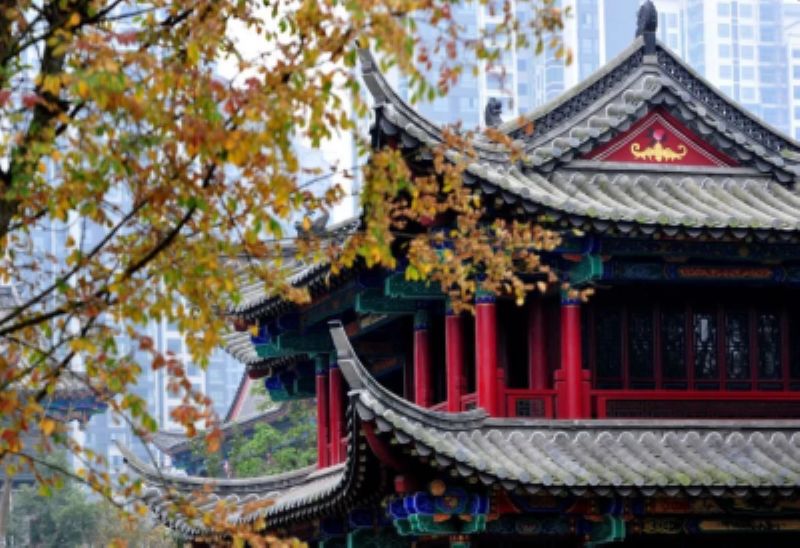Ancient Chinese buildings were very unique, with distinct structures and colors. They were always made out of dirt and wood. Because wood was a major component in most structures, water was very bad for the buildings. To protect their buildings from water, the citizens of ancient China created a base for some buildings called hang tu. These bases were made by creating two low barriers and then pounding dirt in between the barriers. This kept the base of the house dry and protected the houses from floods. However, if it rained, the buildings would still get wet and rot. So, fei yans were created. Fei yans were basically just elongated roofs.
In order to hold up fei yans, dou gongs were created. Dou gongs were actually a very genius invention. They used the natural power of wood to secure structures. In order for dou gongs to be secure however, sun mao’s were needed. Sun mao’s were made of two or more pieces of wood having dents and bumps.

Using the invention of sun mao’s and dou gong’s, the architects of ancient China were able to build some of the most secure structures in the world. The natural strength of wood is extremely strong, and because no nails were used, the natural connection between the pieces of wood allowed them some flexibility, which was extremely important for withstanding earthquakes.

An average American home can last up to 100 years, while structures from the Tang dynasty, which existed over a thousand years ago, still exist.
The first Tang dynasty structure to be discovered in China was the Foguang si, or Foguang temple. This temple was discovered by Liang Si Chen in 1937. He went to America for college and that was when he realized that no complete book about Chinese architecture had ever been written by a Chinese person. The only copies he found about Chinese architecture were written in Japan. They were meant to advertise the intact Tang dynasty architecture located in Japan.
Liang Si Chen and his wife examined hundreds of structures before they came across Foguang temple. They were examining a painting when he spotted Foguang temple in the painting. He and his wife were ecstatic to discover the temple in real life.
In 1946, he published “A Pictorial History of Chinese Architecture” in both English and Chinese.
Another very helpful book about Chinese architecture is the “营造法式”. This book was written by Li Jie in the Song dynasty to prevent corrupt people from succeeding in the building business. The book covered everything a person could know about buildings, and was very helpful to many.
The Chinese architects of the past were some of the smartest people to ever walk the earth, they managed to design and create structures way stronger than any building today without advanced technology and materials.



发表回复
要发表评论,您必须先登录。